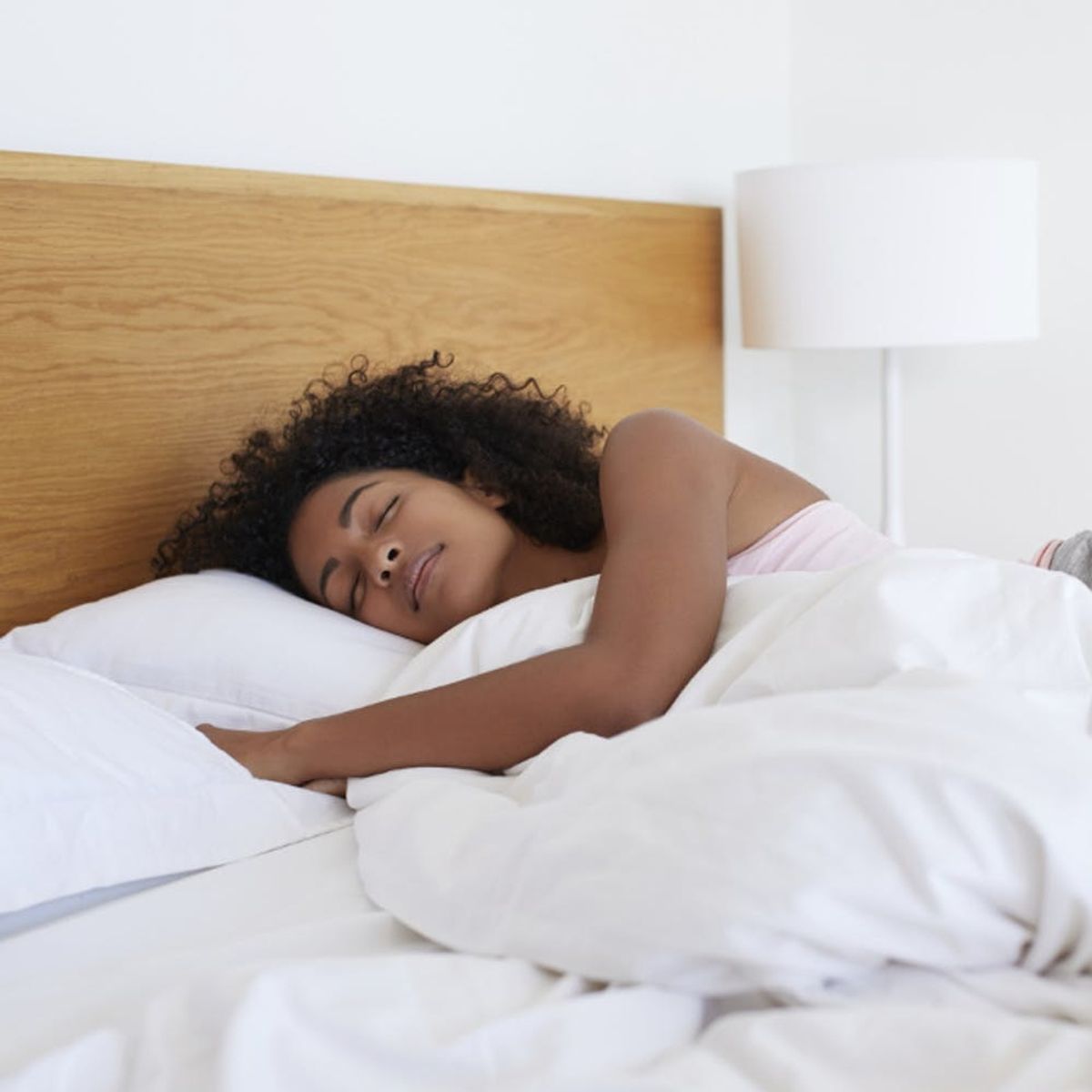Pink Noise Could Be Your New Favorite Solution for a Good Night’s Sleep

Sleep can be a tricky thing. It’s essential for everything from functioning properly in your day-to-day to brightening skin and regulating appetite (which is why a box of donuts looks so good after a restless night). And it’s usually when we need it the most that it’s hardest to get. But science has a tool straight out of Elle Woods’ cotton-candy-colored playbook to aid with sleep woes. It’s pink noise, kin to white noise, but more soothing. You may already be using it without knowing.

WHAT’S PINK NOISE?
Just like white light has all the colors of the spectrum, white noise has sounds from all frequencies, and it plays them at the same level of intensity throughout. The result is a high-pitched fuzz, like the sound of static on a TV or radio. Although white noise became the trademark of sleep aids for its muffling effect on thoughts, which can be great for drowning out surrounding noise when you’re at the office, it’s definitely not fun to listen to before bed.
Pink noise is much more pleasant. It’s the pattern you hear when you listen to the rainfall setting on your sleep app or a flowing brook when you’re camping, for example. Perhaps the reason pink noise feels so familiar and comforting is because it matches things you are intimately familiar with — your heartbeat, the breeze slightly rustling through trees, traffic flow.
Humans don’t hear in a linear pattern, and we’re sensitive to high-pitch sounds, like that of a crying baby (thanks, biology). Pink noise takes that into account and balances out the sound by lowering volume as the frequency increases, therefore maintaining a constant frequency. The effect is more pleasant sounding to the ear and soothing to your brain. Similar to the reason behind the term white noise, pink noise has been named that because light with a similar spectrum appears pink.

THE SCIENCE BEHIND THE BENEFITS OF PINK NOISE
Sound plays a big role in brain activity. Pink noise’s steady beat helps regulate and synchronize brain waves, which allows you to stay in a deep sleep for longer. That, in turn, helps your memory. A recent study published in Frontiers in Human Neuroscience shows how pink noise affects sleep and memory retention in older adults. For two nights, the participants were given a memory test before bed and in the morning, and brain activity was monitored overnight. On the night they listened to pink noise, the participants enjoyed longer spurts of deep sleep and performed three times better on the memory tests.
So the next time you’re struggling to stop your mind from racing at night or feeling like you can’t retain anything from meetings or classes, just stream a pink noise video on YouTube when you hit the hay. There, now you have one more science-endorsed reason to love the color pink!
What tricks do you have to help you sleep? Tweet us @BritandCo!
(Photos via Getty)



















